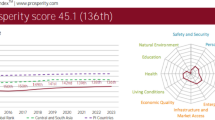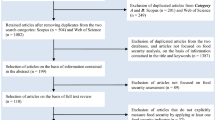Abstract
Using data from a three-year study of socioeconomic factors influencing hunting in 23 indigenous communities, we assess the influence of indigenous and Christian beliefs and practices on dietary taboos among Makushi and Wapishana peoples in the Guyanese Amazon. We found that members of Evangelical and established (Anglican and Catholic) churches do not differ significantly in terms of their adherence to dietary restrictions and members of Sabbatarian churches show a stronger tendency to adhere to dietary taboos than Evangelicals or members of established churches. Counter to expectations, we found no significant difference in avoidance of meat between households belonging to established and Evangelical churches. Furthermore, members of all church groups deviated in terms of dietary restrictions from indigenous norms as exemplified in dietary advice given by shamans. We conclude that, despite doctrinal opposition to shamanistic practices associated with indigenous taboos, there is continuity in terms of dietary practice among Makushi and Wapishana households that have converted to Evangelical and, to some degree, Sabbatarian forms of Christianity.


Similar content being viewed by others
Notes
In addition to protected and indigenous lands, Amazonia includes timber concessions, agricultural land and state and federal lands under varying degrees of human impact.
Due to the difficulty of evaluating hunting pressure around communities in close spatial proximity to others, seven predominantly Makushi and three predominantly Wapishana communities of the Rupununi region were not included in the study.
Data were not available for shaman visits in two villages due to unreliable data in one community and reticence by villagers to be surveyed on the matter in the other. A third village in which a shaman was resident was not among the study communities.
Overlap exists between categories and species. For example, the category “wild meat” encompasses the various forms of terrestrial and avian fauna. The category “fish, certain species” referring collectively to fish that fall into subsets of groups that partially, but not completely, overlap with “skin fish” and “all fish” categories.
References
Alvard, M. S. (1993). Testing the "Ecologically Noble Savage" Hypothesis: Interspecific Prey Choice by Piro Hunters of Peru. Human Ecology 21: 355–387.
Bacchiddu, G. (2009). ‘Before we were all Catholics’: Changing religion in Apiao, Southern Chile. In Vilaça, A., and Wright, R. M. (eds.), Native Christians: Modes and Effects of Christianity among Indigenous Peoples of the Americas. Ashgate, Burlington, VT, pp. 53–70.
Balée, W. (1985). Ka’apor Ritual Hunting. Human Ecology 13(4): 485–510.
Begossi, A., Hanazaki, N., and Ramos, R. M. (2004). Food Chain and the Reasons for Fish Food Taboos among Amazonian and Atlantic Forest Fishers (Brazil). Ecological Applications 14(5): 1334–1343.
Belaunde, L. E. (2000). Epidemics, Psycho-Actives and Evangelical Conversion among the Airo-Pai of Amazonian Peru. Journal of Contemporary Religion 15(3): 349–359.
Colding, J., and Folke, C. (2001). Social Taboos: “Invisible” Systems of Local Resource Management and Biological Conservation. Ecological Applications 11(2): 584–600.
Crawley, M. J. (2007). The R Book. John Wiley and Sons Ltd, Chichester, UK.
Dean, B. (2009). Urarina Society, Cosmology, and History in Peruvian Amazonia. University of Florida Press, Gainesville, Florida.
Farage, N. (1986). As Muralhas dos Sertões: Os Povos Indigenas do Rio Branco e a Colonização (Dissertation). Universidade Estadual de Campinas, São Paulo, Brazil.
Farage, N. (2003). Rebellious memories: The Wapishana in the Rupununi uprising, Guyana, 1969. In Whitehead, N. (ed.), Histories and Historicities in Amazonia. University of Nebraska Press, Lincoln, Nebraska, pp. 107–122.
Forte, J. (ed.) (1996). Makusipe Komanto Iseru: A Makushi Way of Life, North Rupununi District Development Board. Annai, Guyana.
Fragoso, J.M.V. (1991). The effect of hunting on Tapirs in Belize. In Robinson, J., and Redford, K. (eds.), Neotropical Wildlife Use and Conservation. University of Chicago Press, Chicago, pp. 154–162.
Fragoso, J. M. V., Silvius, K. M., Read, J. M., Gibbs, J. P., Martins, L. L., and Chave, J. (2005). Biodiversity Dynamics and Land-Use Changes in the Amazon: Multi-Scale Interactions between Ecological Systems and Resource-Use Decisions by Indigenous Peoples. Unpublished proposal, National Science Foundation, Arlington, VA.
Godoy, R., Reyes-García, V., Vadez, V., Leonard, W. R., Tanner, S., Huanca, T., and Wilkie, D. (2009). The Relation between Forest Clearance and Household Income among Native Amazonians: Results from the Tsimane’ Amazonian Panel Study, Bolivia. Ecological Economics 68: 1864–1871.
Gray, C. L., Bilsborrow, R. E., Bremner, J. L., and Lu, F. (2008). Indigenous Land Use in the Ecuadorian Amazon: A Cross-cultural and Multilevel Analysis. Human Ecology 36: 97–109.
Grotti, V. E. (2009). Protestant evangelism and the transformability of indigenous bodies in Northeastern Amazonia. In Vilaça, A., and Wright, R. M. (eds.), Native Christians: Modes and Effects of Christianity among Indigenous Peoples of the Americas. Ashgate, Burlington, VT, pp. 109–126.
Hames, R. (1979). A comparison of the efficiencies of the shotgun and bow in Neotropical forest hunting. Human Ecology 7: 219–252.
Hames, R. (1991). Wildlife conservation in tribal societies. In Oldfield, M. L., and Alcorn, J. B. (eds.), Biodiversity, Culture, Conservation and Eco-development, Westview, Boulder, Colorado, and San Francisco, California, pp. 172–199.
Hames, R., and Vickers, W. (1982). Optimal Diet Breadth Theory as a Model to Explain Variability in Amazonian Hunting. American Ethnologist 9(2): 358–378.
Hemming, J. (1978). Red Gold: The Conquest of the Brazilian Indians, 1500–1760. Harvard University Press, Cambridge, MA.
Henfrey, T. (2002). Ethnoecology, Resource Use, Conservation and Development in a Wapishana Community in the South Rupununi, Guyana (Dissertation). University of Kent at Canterbury, UK.
Hill, K., and Hawkes, K. (1983). Neotropical hunting among the Aché of Eastern Paraguay. In Hames, R., and Vickers, W. (eds.), Adaptive Responses of Native Amazonians. Academic, New York, pp. 223–267.
Hill, K., Padwe, J., Bejyvagi, C., Bepurangi, A., Jakugi, F., Tykuarangi, R., and Tykuarang, T. (1997). Impact of Hunting on Large Vertebrates in the Mbaracayu Reserve, Paraguay. Conservation Biology 11(6): 1339–1353.
Hugh-Jones, S. (1994). Shamans, prophets, priests and pastors. In Thomas, N., and Humphrey, C. (eds.), Shamanism, History and the State. University of Michigan Press, Ann Arbor, Michigan, pp. 32–75.
Instituto Socio-Ambiental. (2012). [online] URL: www.socioambiental.org.
Koster, J., Hodgen, J., Venegas, M., and Copeland, T. (2010). Is Meat Flavor a Factor in Hunters' Prey Choice Decisions? Human Nature 21: 219–242.
Laugrand, F. B., and Oosten, J. G. (2009). Shamans and missionaries: Transitions and transformations in the kivalliq coastal area. In Vilaça, A., and Wright, R. M. (eds.), Native Christians: Modes and Effects of Christianity among Indigenous Peoples of the Americas. Ashgate, Burlington, VT, pp. 167–186.
Luzar, J. B., Silvius, K. M., Overman, H., Giery, S. T., Read, J. M., and Fragoso, J. M. V. (2011). Large-scale Environmental Monitoring by Indigenous Peoples. BioScience 61(10): 771–781.
Luzar, J. B., and Fragoso, J. M. V. (2012). Shamanism, Christianity and Culture Change in Amazonia. Human Ecology. doi:10.1007/s10745-012-9515-2.
McDonald, D. R. (1977). Food Taboos: A Primitive Environmental Protection Agency (South America). Anthropos 72: 734–748.
Meyer-Rochow, V. B. (2009). Food Taboos: Their Origins and Purposes. Journal of Ethnobiology and Ethnomedicine 5: 18–27.
Moran, E. F. (1974). The adaptive system of the Amazonian Caboclo. In Wagley, C. (ed.), Man in the Amazon, University of Florida Press. Gainesville, Florida.
Novaro, A. J., Redford, K. H., and Bodmer, B. E. (2000). Effect of Hunting in Source-sink Systems in the Neo-Tropics. Conservation Biology 14(3): 713–721.
Ohl-Schacherer, J., Shepard, G. H., Kaplan, H., Peres, C. A., Levi, T., and Yu, D. W. (2007). The Sustainability of Subsistence Hunting by Matsigenka Native Communities in Manu National Park, Peru. Conservation Biology 5(21): 1174–1185.
Ostrom, E. (2009). A General Framework for Analyzing Sustainability of Social-ecological Systems. Science 325: 419–422.
Peres, C. A. (1990). Effects of Hunting on Western Amazonian Primate Communities. Biological Conservation 54(1): 47–59.
Peres, C. A., and Nascimento, H. S. (2006). Impact of Game Hunting by the Kayapó of South-eastern Amazonia: Implications for Wildlife Conservation in Tropical Forest Indigenous Reserves. Biodiversity and Conservation 15: 2627–2653.
Pezzuti, J. C. B., Lima, J. P., Da Silva, D. F., and Read, A. B. (2010). Uses and Taboos of Turtles and Tortoises along Rio Negro, Amazon Basin. Journal of Ethnobiology 30(1): 153–168.
RAISG. (2012). http://raisg.socioambiental.org/system/files/AMAZON2012_english.pdf.
Rappaport, R. A. (1968). Pigs for the Ancestors. Yale University Press, New Haven.
Read, J. M., Fragoso, J. M. V., Silvius, K. M., Luzar, J. B., Overman, H., Cummings, A. R., Giery, S., and de Oliveira, L.F.B. (2010). Space, Place, and Hunting Patterns among Amerindians of the Guyanese Amazon. Journal of Latin American Geography 9(3): 213–243.
Read, J. M., Fragoso, J. M. V., Luzar, J. B., and Overman, H. (2011). Wowetta Village, Rupununi, Guyana. Unpublished Report, Geography Department, Syracuse University, Syracuse, NY, Project Fauna Community Atlas.
Redford, K. H., and Robinson, J. G. (1987). The Game of Choice: Patterns of Indian and Colonist Hunting in the Neotropics. American Anthropologist 89(3): 650–667.
Ricketts, T. H., Soares-Filho, B., da Fonseca, G. A. B., Nepstad, D., Pfaff, A., Petsonk, A., Anderson, A., Boucher, D., Cattaneo, A., Conte, M., Creighton, K., Linden, L., Maretti, C., Moutinho, P., Ullman, R., and Victurine, R. (2010). Indigenous Lands, Protected Areas, and Slowing Climate Change. PLoS Biology 8(3).
Santos-Granero, F. (2009). Hybrid Bodyscapes: A Visual History of Yanesha Patterns of Cultural Change. Current Anthropology 40(50): 477–512.
Smith, N. J. H. (1981). Man, Fishes, and the Amazon. Columbia University Press, NY.
Ulloa, A., Rubio-Torgler, H., and Campos-Rozo, C. (2004). Conceptual basis for the selection of wildlife management strategies by the Embera People in Utria National Park, Choco, Colombia. In Silvius, K. M., Bodmer, R. E., and Fragoso, J. M. V. (eds.), People in Nature: Wildlife Conservation in South and Central America. Columbia University Press, NY, pp. 11–36.
Vilaça, A. (1997). Christians without Faith: Some Aspects of the Conversion of the Wari’ (Pakaa Nova). Ethnos 62(1): 91–115.
Vilaça, A. (2009). Conversion, predation and perspective. In Vilaça, A., and Wright, R. M. (eds.), Native Christians: Modes and Effects of Christianity among Indigenous Peoples of the Americas. Ashgate, Burlington, VT, pp. 147–166.
Vilaça, A., and Wright, R. M. (2009). Introduction. In Vilaça, A., and Wright, R. M. (eds.), Native Christians: Modes and Effects of Christianity among Indigenous Peoples of the Americas. Ashgate, Burlington, VT, pp. 1–19.
Wright, R. M. (2009). The Art of Being Crente: The Baniwa Protestant Ethic and the Spirit of Sustainable Development. Identities 16(2): 202–226.
Yost, J., and Kelley, P. (1983). Shotguns, blowguns, and spears: An analysis of technological efficiency. In Hames, R., and Vickers, W. (eds.), Adaptive Responses of Native Amazonians. Academic, New York, pp. 189–224.
Acknowledgements
We would like to thank the Guyana Environmental Protection Agency, especially Indarjit Ramdass and Damian Fernandes and the Ministry of Amerindian Affairs for authorizing the study and for their attentiveness to permit extensions. The Iwokrama International Centre for Rainforest Conservation and Development and the North Rupununi District Development Board acted as in-country partners and provided important logistic support. We thank the Makushi and Wapishana technicians whose hard work and dedication made the research possible, as well as the leaders and members of all our partner communities for their innumerable contributions to the project. The National Science Foundation (BE/CNH 05 08094) provided funding for this project. We thank the program officers and division leaders at the NSF who understood the complexities of working with politically charged socio-ecological systems and multiple academic institutions and provided excellent guidance throughout the project. Oskar Burger contributed to the statistical analysis components of the paper. We thank the graduate students, post docs, data transcribers, and volunteers who are not authors on this paper but who contributed essential work and ideas to the project, as well as Lisa Curran, Peter Vitousek, Rodolfo Dirzo for their logistical support at Stanford University. Dominique (Nickie) Irvine, Oskar Burger and Sean Giery provided insightful comments. Finally, we thank three anonymous reviewers for their valuable comments on a draft of this paper.
Author information
Authors and Affiliations
Corresponding author
Rights and permissions
About this article
Cite this article
Luzar, J.B., Silvius, K.M. & Fragoso, J.M.V. Church Affiliation and Meat Taboos in Indigenous Communities of Guyanese Amazonia. Hum Ecol 40, 833–845 (2012). https://doi.org/10.1007/s10745-012-9521-4
Published:
Issue Date:
DOI: https://doi.org/10.1007/s10745-012-9521-4




